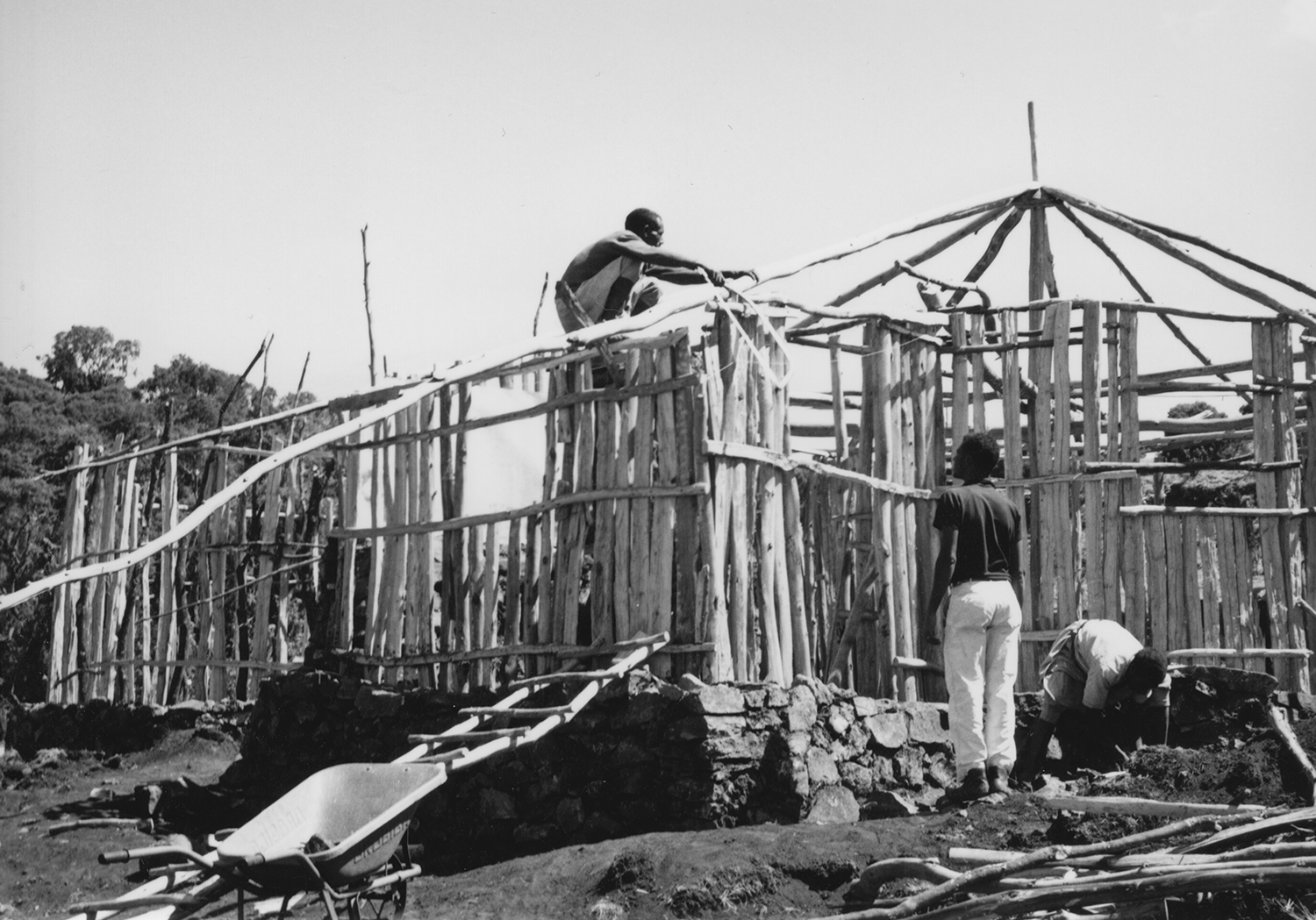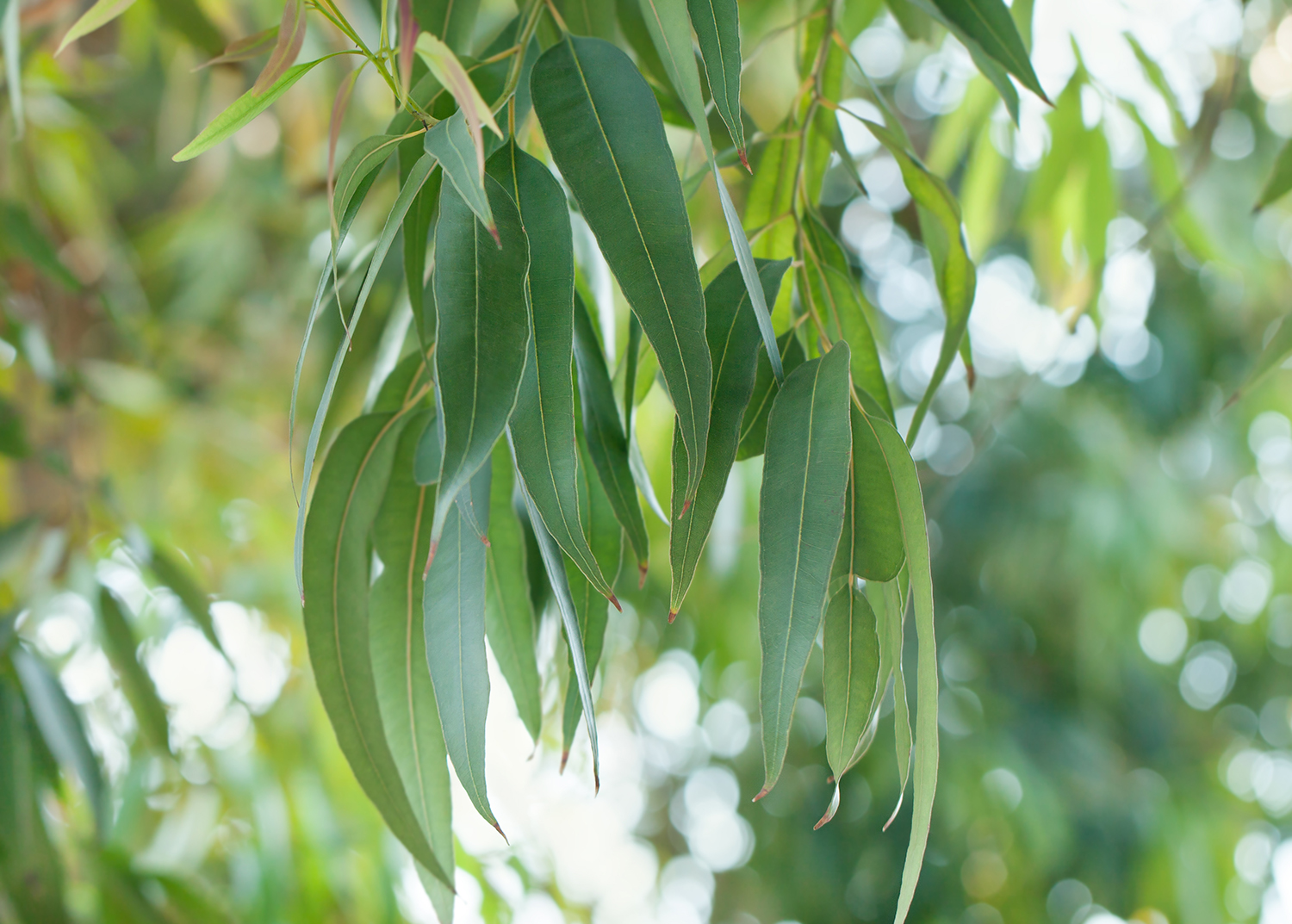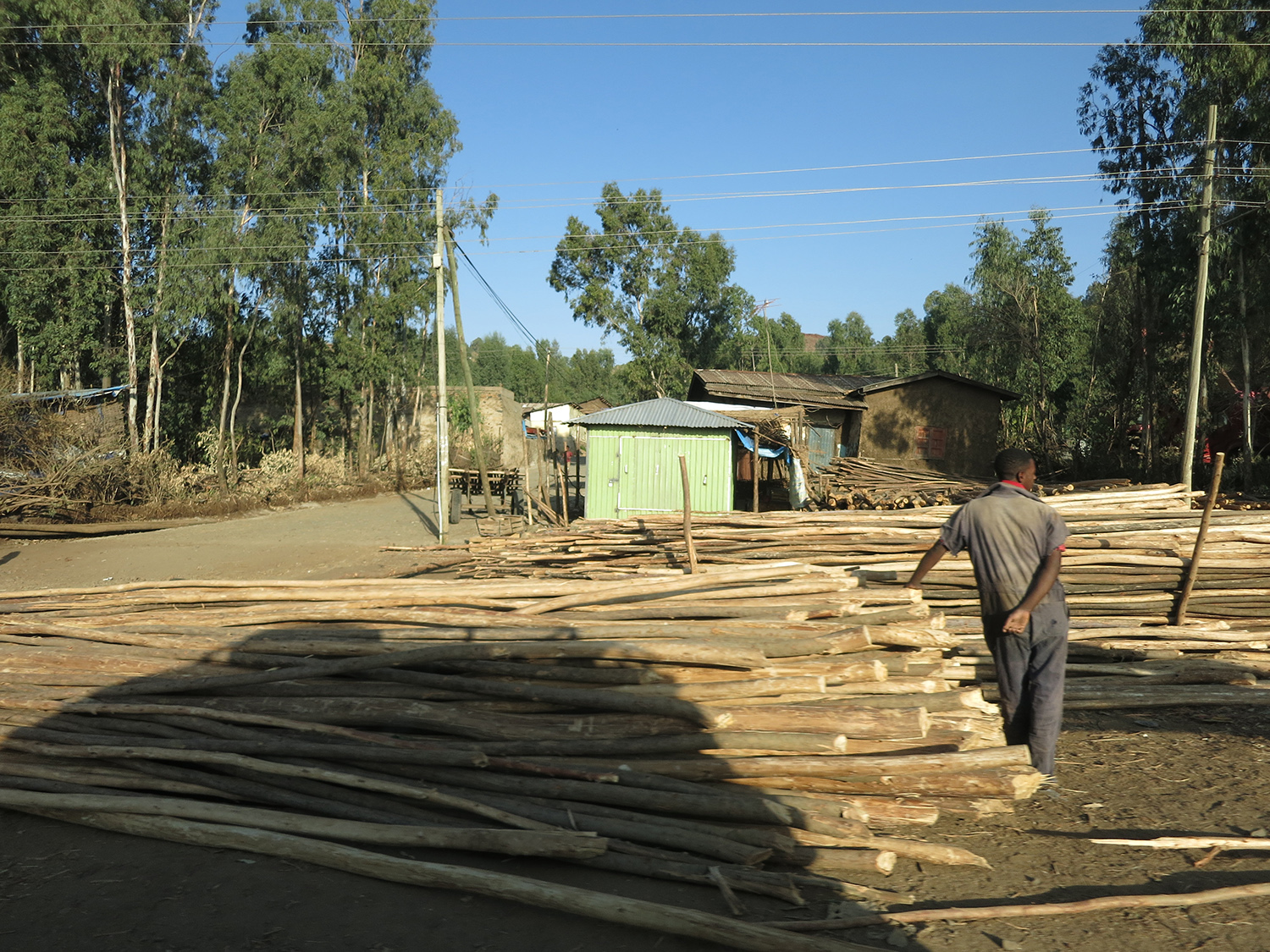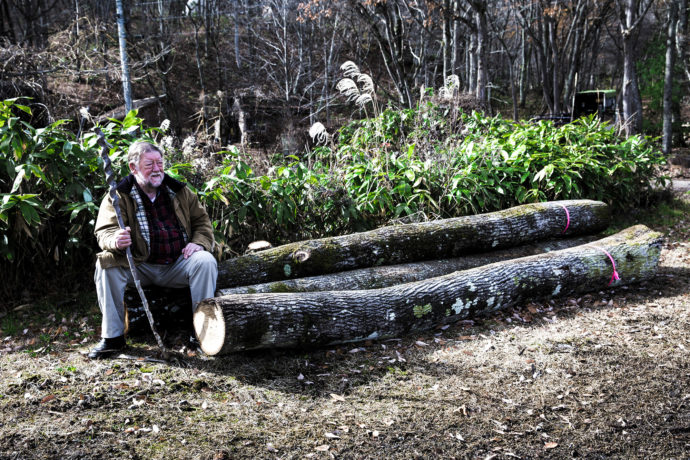Column
【赤鬼のつぶやき C.W.ニコル】ユーカリ(EUCALYPTUS)
エチオピアのシミエン山岳国立公園で公園長を務めていた頃、私は部下のレンジャーたちと力を合わせ、家から厩舎、倉庫、ときには橋まで、実に多くのものを造りました。当時、建築材として使うことができたのはユーカリだけでした。公園周辺の村々で生えている木を買いつけては、自分たちの手で切り倒し、枝をはらったものを、人を雇って公園まで担いで運ばせたものです。一本たりとも在来種の伐採は許しませんでした。

ユーカリはオーストラリア原産で、約700もの種類があります。私たちがユーカリと呼んでいるのは「ユーカリ・グロブルス(Eucalyptus globulus)」のことで、エチオピアには1895年、皇帝メネリク2世の時代に輸入されたのが始まりです。メネリク2世はこれより前、アディスアベバ(アムハラ語で「新しい花」の意)を新たな首都に定め、人々は建設や燃料用に木材の安定供給を必要としていたのです。
オーストラリアの友人たちはユーカリを「blue gum trees(青いガムの木)」と呼んでいます。それは、葉の青みがかった灰色や独特の芳香によるものです。今では、エチオピアのユーカリ・プランテーションはアフリカ全土でも最大の規模を誇ります。ただ悲しいことにその一方で、在来種は5パーセント足らずを残すのみとなってしまいました。

ユーカリは成長が早く、あらゆる気候に適応します。伐採しても切り株から萌芽が伸びて成長しますし、種からも育ちます。エチオピアでは、葉や小枝もムダにせず、集めて燃料にします。どちらも燃えやすく、たちまち高温に達します。木質は堅く、丈夫です。

ところが、海外ではユーカリの悪評ばかりが目立ちます。土壌の水分を多量に吸収して蒸散させ、水を枯らしてしまうとか、はがれた樹皮や落葉が散らばり、他の植物の成長を妨げるとかの指摘もあります。また、コアラの好物として知られるユーカリですが、実はその葉には毒があり、原産国オーストラリア以外では、草食動物に有害な存在と見なされています。
しかし、エチオピアでは、ユーカリは貧しい農民にとって大切な収入源となっています。2013年にシミエンを再訪した際、国立公園内に住んでいる村人たちがユーカリばかりを栽培し、在来種の樹木や植物に害が及んでいる様子を見て、いささか驚き、落胆しました。私が公園長だった時代には、あり得なかったことです。

当時、国立公園の建設にはユーカリに頼らざるを得なかったため、この木に対して愛憎相半ばする複雑な思いを抱いたものです。近年、オーストラリアで猛威をふるう山火事の被害が報じられていますが、その様子を見ただけで煙の臭いまでが迫ってくるようです。

一方、ユーカリの葉から取れる精油は、鼻づまりや喘息の治療や防ダニ剤として広く用いられています。薄めたものを肌に塗れば皮膚のただれに効果があり、関節や筋肉の痛みを和らげる作用があるとされています。また、その香りは気持ちを落ちつかせ、心身をリラックスさせるアロマとしても好まれています。
幸いにして、この日本ではそれほどなじみのないユーカリですが、世界各地、ことに過去において天然林の大部分を破壊により失ったスペインのような国々では、外来種であるユーカリが広く栽培されています。
C.W.ニコル
2019年11月
写真提供:C.W.ニコル・アファンの森財団、ニコルオフィス /資料画像:i-stock
EUCALYPTUS
During the time that I was serving as the Game Warden of the Simien Mountain National Park in Ethiopia we did a lot of construction; houses, stables, storage huts, even bridges. During that time the only wood that I allowed to be used was eucalyptus, all of which had to be bought as living trees from villages outside the park areas, then felled, stripped of branches and bark, then carried into the park on the backs of day laborers. I would not permit any cutting of the native trees.
Eucalyptus is essentially an Australian tree, with some 700 species. The eucalyptus that we used was Eucalyptus globulus, a tree that had been imported into Ethiopia in 1895 by Emperor Menelik. Emperor Menelik had established a new capital city, Addis Ababa (‘new flower’) and his people needed a reliable supply of wood for fuel and construction.
My Australian friends call eucalyptus ‘blue gum trees’ because of the bluish grey color of the leaves and its distinctive aromatic oily scent. Now Ethiopia has the largest area of eucalyptus plantations in the whole of Africa, but sadly, less than five percent of the native trees are left.
Eucalyptus grows rapidly, and adapts to all kinds of climatic conditions. When cut it coppices from the stump. It is simply grown from seed. In Ethiopia, even leaves and small twigs are gathered for fuel. They burn easily and very hot. The wood is hard and strong.
Eucalyptus has gathered a rather bad environmental impression abroad. It evaporates a lot of water and its litter suppresses other plant growth. Outside of its native Australia (where koalas feed on it) eucalyptus is toxic to other herbivores.
However, in Ethiopia it has become valuable tree as a cash crop for poor farmers. When I returned to the Simien in 2013 I was a bit dismayed that the villagers living inside the national park had all been planting eucalyptus, to the detriment of native trees and plants. When I was in charge that was not allowed.
Because we had to rely on this Australian tree for park construction I had a love-hate relationship with it. Nowadays, seeing the terrible forest fires in Australia I can almost smell the smoke.
Eucalyptus oil is widely used to treat nasal congestion, asthma and as a tick repellant. Diluted, it is applied to the skin to treat ulcers and to relieve arthritis and sore joints and muscles. Diffused in steam as an aromatic it is a popular relaxant.
Eucalyptus is thankfully not a common tree in Japan, but it is widely planted all over the world, especially in countries such as Spain, a country that historically destroyed so much of its native forest.
C.W. Nicol
11.2019






